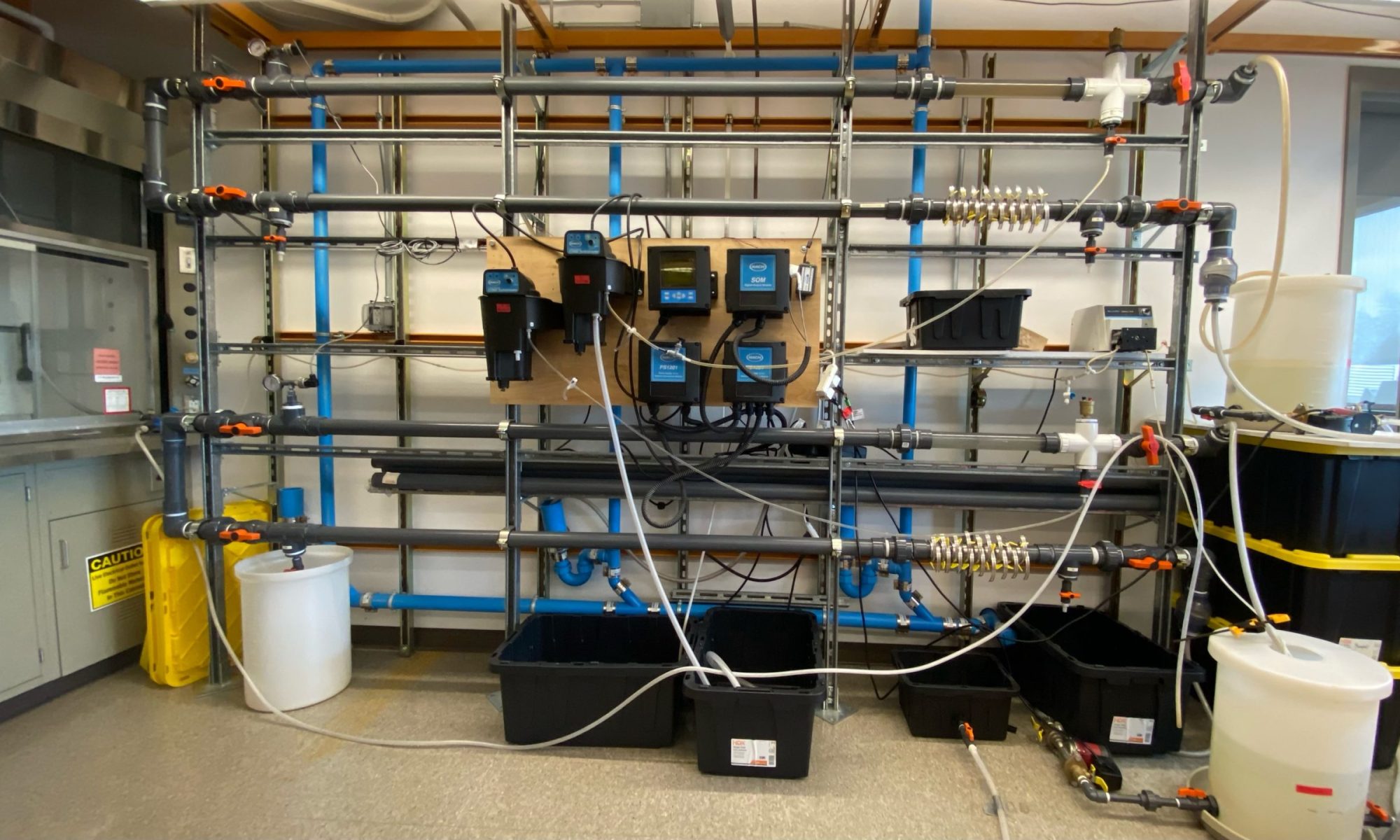Research Interview with Mimi Alkattan:
Author: Stephen Stamegna
Background:Mimi Alkattan is a Ph.D. student in the Environmental and Water Resources engineering program and a graduate member of the Kumpel Research Group at the University of Massachusetts Amherst currently pursuing a degree in the field of drinking water quality.
Q: Could you tell me a little bit about your project?

A: My project investigates intermittent water supply (IWS) using a pilot scale-model of a water distribution system. This allows us to conduct experiments comparing intermittent water supply and continuous water supply. We’re mostly concerned with how intermittency impacts water quality; we know it has negative impacts on water quality, but we would like to gain a more specific understanding.
Q: What do you hope to achieve through this research?
A: The main objective is to gain a better understanding of how intermittency affects water quality. This would help us to develop solutions to better maintain water quality in intermittent systems.
Q: As of now, what are your materials and methods for conducting your study?
A: There are different components to the materials and methods we use for the intermittent water supply study. First, our experimental setup is pilot-scale and it includes 2 identical recirculating pipeloops that model drinking water distribution systems. The two pipeloops consist of 22 feet of 2-in PVC, a pump, and a 10-gallon reservoir. One is used as a continuous control while the other models intermittency. Second, we measure different water quality parameters such as pH, DO, temperature, turbidity, chloramine concentrations, heterotrophic plate count (HPC), and total iron concentrations. We measure those parameters with different instruments in the lab. The third part of our methods is one of the most important things that we want to characterize; these are the biofilms that grow on the on the inner surfaces of the pipe walls. In order to sample these biofilms, we use biofilm sampling coupons. The coupons are removable plugs made of 22-millimeter disks cut out from the pipe walls. They can be removed after experimentation so that we can analyze the composition of the biofilms and determine biofilm thickness.
Q: Have you experienced any complications in your research?
A: Definitely. The really exciting thing about my research is that very few people have performed lab-based experimentation on intermittent water supply. Therefore, the main complication is that there are not any clearly defined methods on how to conduct the research. This means that I have to piece together how to do my research from different fields and develop some of the methods on my own. Another complication is that there are a lot of various components to the pipeloops (valves, sensors, gauges, meters, pumps, etc.) and they don’t always fit together on the first try.
Q: Have you figured out how to solve these complications?
A: Usually, the issues can be solved in a couple of tries through trial and error.
Q: How does your research relate to the research group at large?
A: Two of the major focuses of our research group are drinking water distribution systems and international water, sanitation, and hygiene (WaSH). My research lies at the intersection of both of those issues since IWS is common in low- and middle-income countries.
Q: Why did you get involved in research?
A: When I was a senior in high school, I took an environmental science class and it was the first time I realized that clean drinking water is a global challenge. That motivated me to go to college and study environmental engineering. I became very interested in research because it helps to develop solutions for these global drinking water challenges.

Q: Why do you like your project in particular?
A: I am really excited to be working on my project because it involves the things I’m really interested in such as drinking water, water distribution, water quality, public health, and issues of inequity. Also, my project allows me to learn a lot of different things including experimental setup, microbiological methods, and more about water distribution piping, fittings, connections, and sensing.
